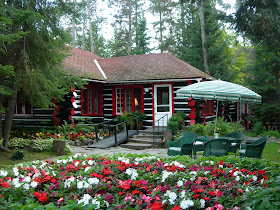Are you acquiring a new home with a garden? Or do you want to change parts or your whole garden? Which plants do you like best? What would be your favored garden style? And does it fit the type of home? But more important to your climate and the surrounding trees?
Garden styles have evolved throughout history, from trends in different locations around the world. Creating a garden style that fits your home and the light conditions is the first step in creating a garden design. It’s also a good starting point if you want to give your garden a lift. It helps you narrow down choices in garden furniture, suitable plants, and ornaments. Garden styles can be grouped into a few categories:
.
English Garden
The most popular seems to be the English garden in which beds of mixed plants are arranged that almost all the soil is covered by various kinds of plants to create a harmonious effect of abundance and beauty. No matter what time of the year, English gardens contain flowering plants, sometimes intermingled with complementing shrubs and trees. Some effort is necessary to establish and maintain such a full garden. English garden plants require almost always sunny conditions.
.
French and Italian Styles
French gardens contain carefully arranged plants that are pruned or otherwise arranged to give an overall pattern. There is usually a limited variety of plants used and flowers tend to be not as important as are the shapes and textures of the plants. French garden styles fit both: sunny and shade conditions.
Italian gardens are similar in that they value structure over flowers and prefer geometric plantings. Better suited to places where larger vistas and sunny areas are present.
The Japanese style suits small garden spaces very well and is formal too - but in a different way. Every plant and ornament is carefully chosen and placed to create ‘pictures' that are pleasing to the eye. Rocks and stones feature prominently in Japanese gardens. Japanese gardens need quite some maintenance. Any flaw in a plant or object will jar the eye and spoil the overall impression.
.
Woodland Gardens
It differs from other styles as most of the plants chosen need a level of shade tolerance. Avoid planting in lines or formal designs and aim for a mix of interesting textures, forms, and colors. Research shows that lots of shade-loving plants are blooming, such as lenten rose, daffodils, astilbe, violets, snowdrops, lily-in-the-valley, coleus, begonia, spiderwort, columbine, hostas, bleeding heart, heuchera... the list goes on and on.
.
Prairie-Style Gardens
A relatively modern style of garden, fitting perfectly to bungalow-style homes. In these gardens, large swathes of plants are combined to create impressions of movement and flow. Especially when grasses are added. Color occurs in great drifts rather than from the combination of different plants as would be the case in an English-style garden. While Prairie-style gardens look informal and very naturalistic, they require careful attention to scale and only a few different plants.
.
Waterwise gardens
Xeriscaping is a smart decision. Warmer temperatures, drought conditions, and water restrictions mean creating a garden that requires less water – one that is both drought-tolerant and water-wise - and look beautiful. All types of sedum plants are perfect, as well as Russian sage, coneflowers, salvia, lavender, yarrow, etc.
.
Planning Required!
The Foundation of Your Garden:
No matter which type of garden you create: plant health and beauty come down to healthy roots, and to encourage better air and water circulation, you need to focus on long-term nourishment. The solution? Use compost! It's rich in nutrients, and if you make your own compost, you are doing wonders for the whole environment. The best part is, it's impossible to use too much compost - so sprinkle it all over your lawn and garden beds.
Happy gardening!
.
<><><><><>
.








